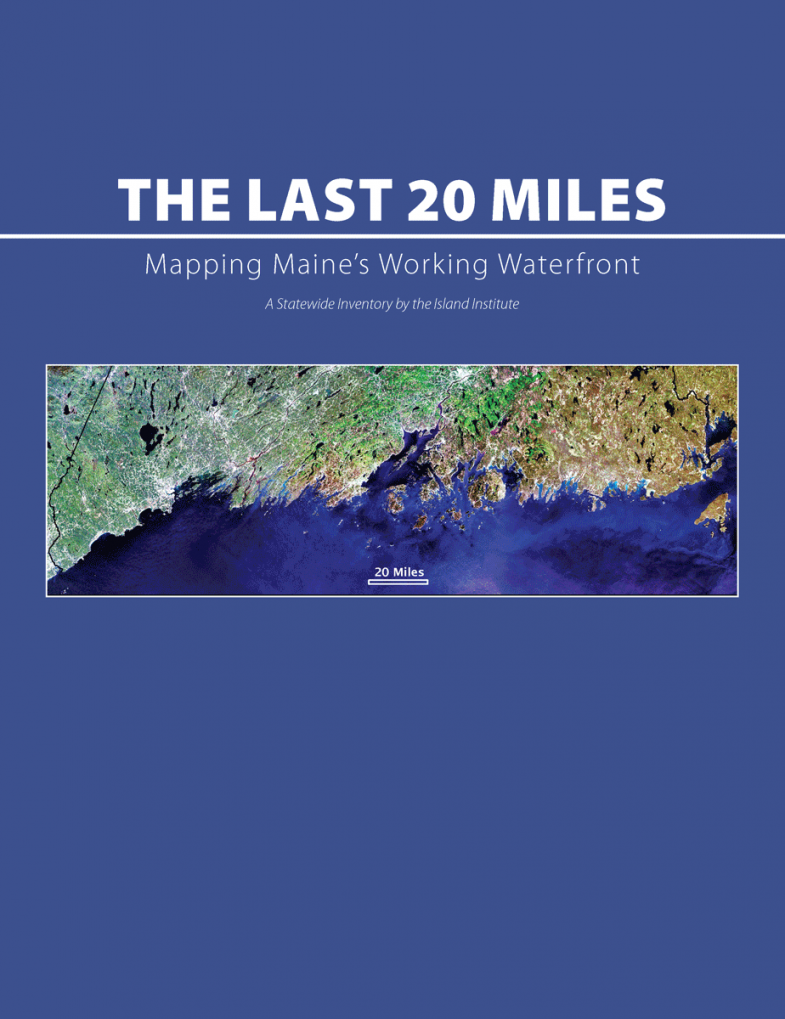In 2007, the Island Institute published "The Last 20 Miles," an analysis of the rapidly declining areas of public waterfront access on the Maine coast. It was a key element in our effort to protect those working waterfronts.
From the report:
Beginning in the summer of 2005, the Island Institute and its partners embarked on a community-based mapping project to quantify the working-waterfront resources for Maine’s 142 coastal towns. The goal of this research effort is to create a new tool in the form of a statewide Working Waterfront Access Map to facilitate dialogue between two historically divided coastal constituencies: the conservation community and the commercial fishing community.
This report discusses the challenges and successes of this effort, the community participation process, project findings, and how this research fits within the growing waterfront access protection toolkit in the state of Maine. Issues such as defining working-waterfront access, setting protocols for public data access, and the sustainability of mapping research are topics that this project addresses. It outlines a model methodology to explore the potential for this community-based mapping effort to remain current, and to learn whether it has applications in other working-waterfront states.
Read the full report below:
